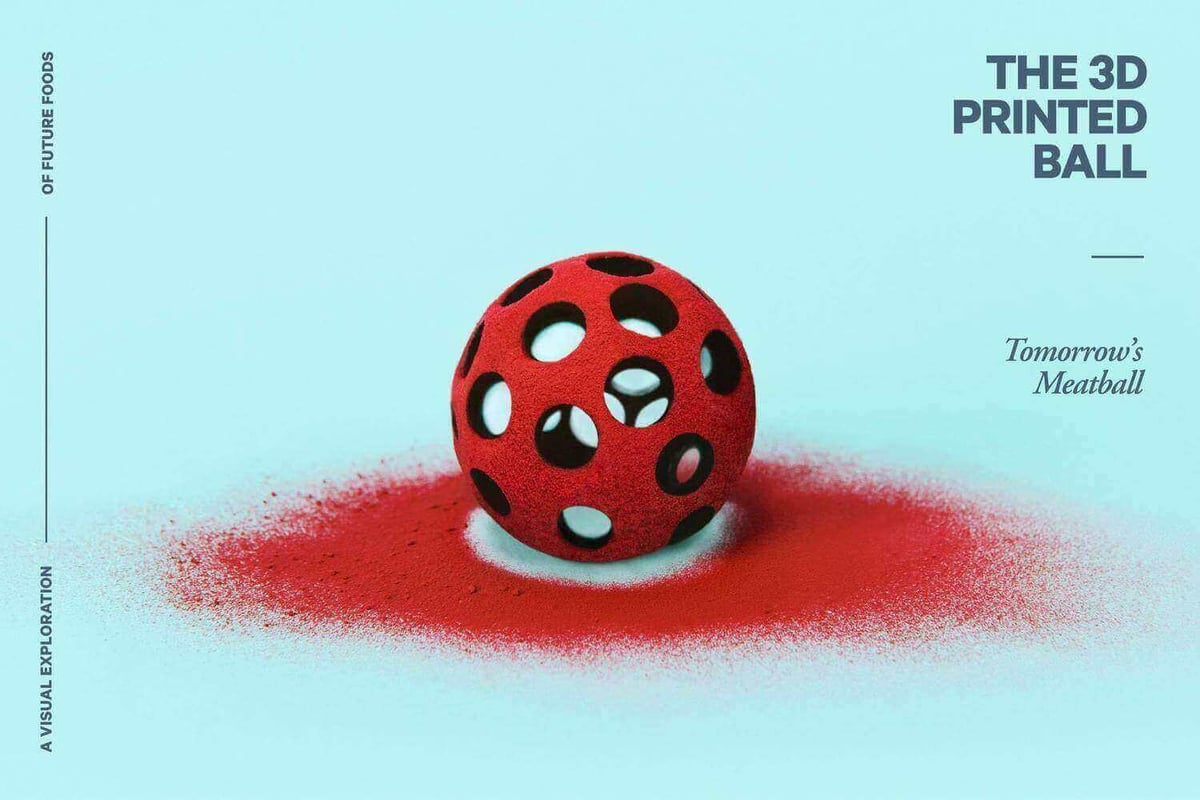IKEA sells more than furniture, they’re also purveyors of food. The company is conducting research into environmentally-friendly 3D printed meatballs.
The next time you visit an IKEA store, browsing for furniture and bickering with your partner, there’s a strong chance you’ll pause to munch on a plate of Swedish meatballs. It’s practically a tradition.
But if we consider that IKEA is selling a great deal of meatballs to their happy customers, and that the production of meat is a significant factor in global warming, you might have plenty of cause to gag on your KÖTTBULLAR.
It’s been well documented, for example, how the food industry uses dwindling supplies of fresh water, destroys forests and grasslands, and causes soil erosion, while pollution and animal waste create dead zones in coastal areas and smother coral reefs. Not to mention the emission of greenhouse gases like Carbon Dioxide by farting cows.
With this problem in mind, the research department at IKEA has set about exploring ways to make their meatballs more environmentally friendly… and that includes 3D printing.
3D Printed Meatballs are Nutritious and Delicious (and Green)
Based in Copenhagen, Denmark, IKEA has a future-living design lab called Space10, which is testing all kinds of innovative technologies for a greener future. Their latest project is Tomorrow’s Meatball, a visual exploration of what an IKEA meatball could look like 20 years in the future.
Led by Bas van de Poel and Kaave Pour, they’ve put together a futuristic menu that incorporates several gastronomic innovations to help mitigate climate change. The list includes meatballs made from artificially grown meat, bugs, nuts, algae, and 3D printed shapes. Says Kaave Pour:
“We used the meatball’s shape and size as a canvas for future foods scenarios, because we wanted to visualise complicated research in a simple, fun and familiar way. There’s hardly any culture that does not cook meatballs — from the Swedish meatball, to Italian/American spaghetti meatballs to spiced up Middle Eastern kofta.”
While some of these options might not look very appetizing, drastic changes in our dietary habits will become necessary within a few years – and not just due to global warming. Our demand for food will increase by 70% within the next 35 years, according to the UN. As our global population grows and climate change impacts on the water and land available for farming, we need to become smarter and more efficient about the way we produce our food — and be more open minded about food diversity. Says Bas van de Poel:
“It’s quite difficult to picture that in the near future we will be eating insects or artificial meat. But, with the increasing demand for food, we need to start considering adding alternative ingredients to our daily menu. You could say that Tomorrow’s Meatball gets people a little more familiar with the unfamiliar.”
License: The text of "IKEA Will Save the Planet with 3D Printed Meatballs" by All3DP is licensed under a Creative Commons Attribution 4.0 International License.

